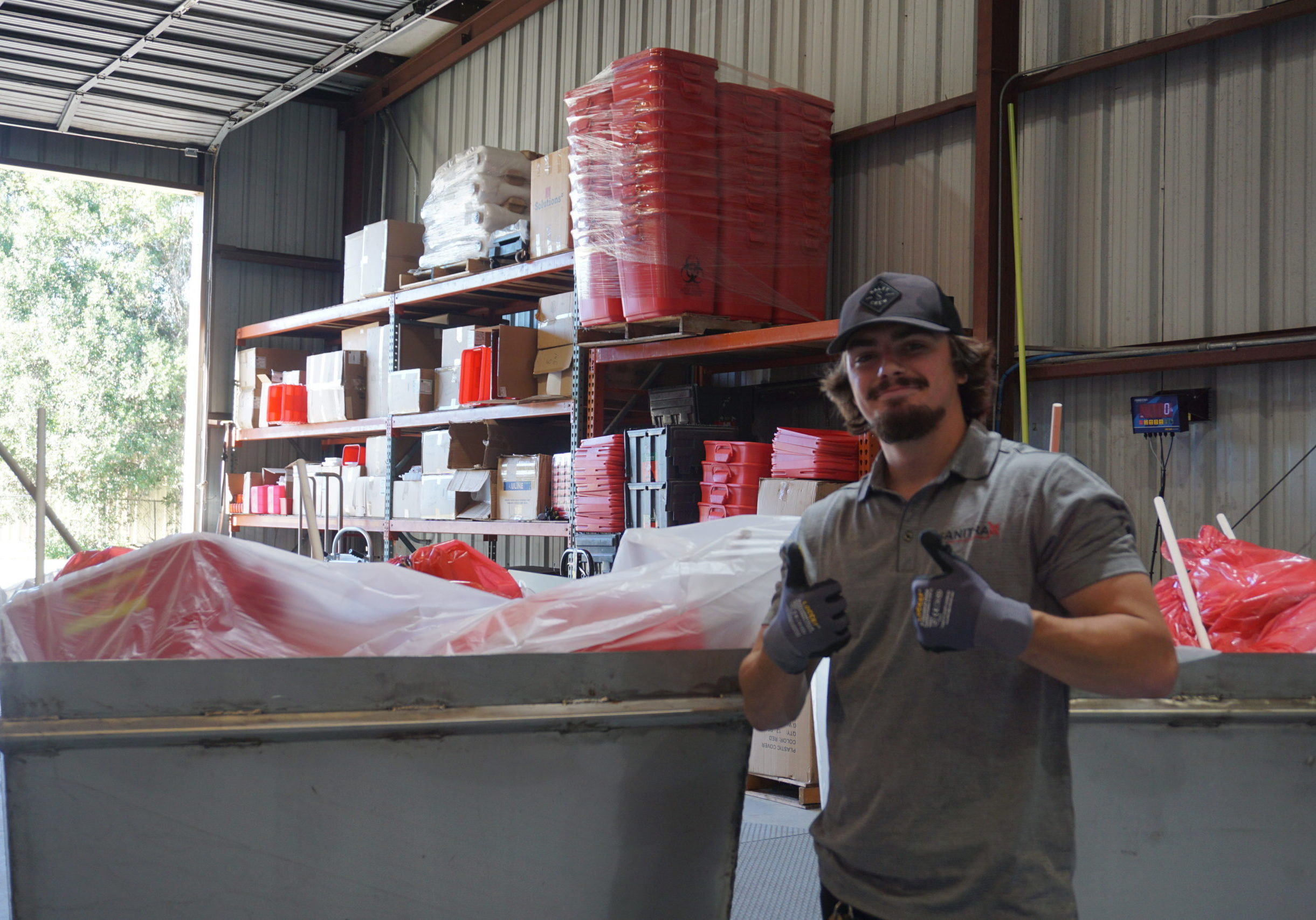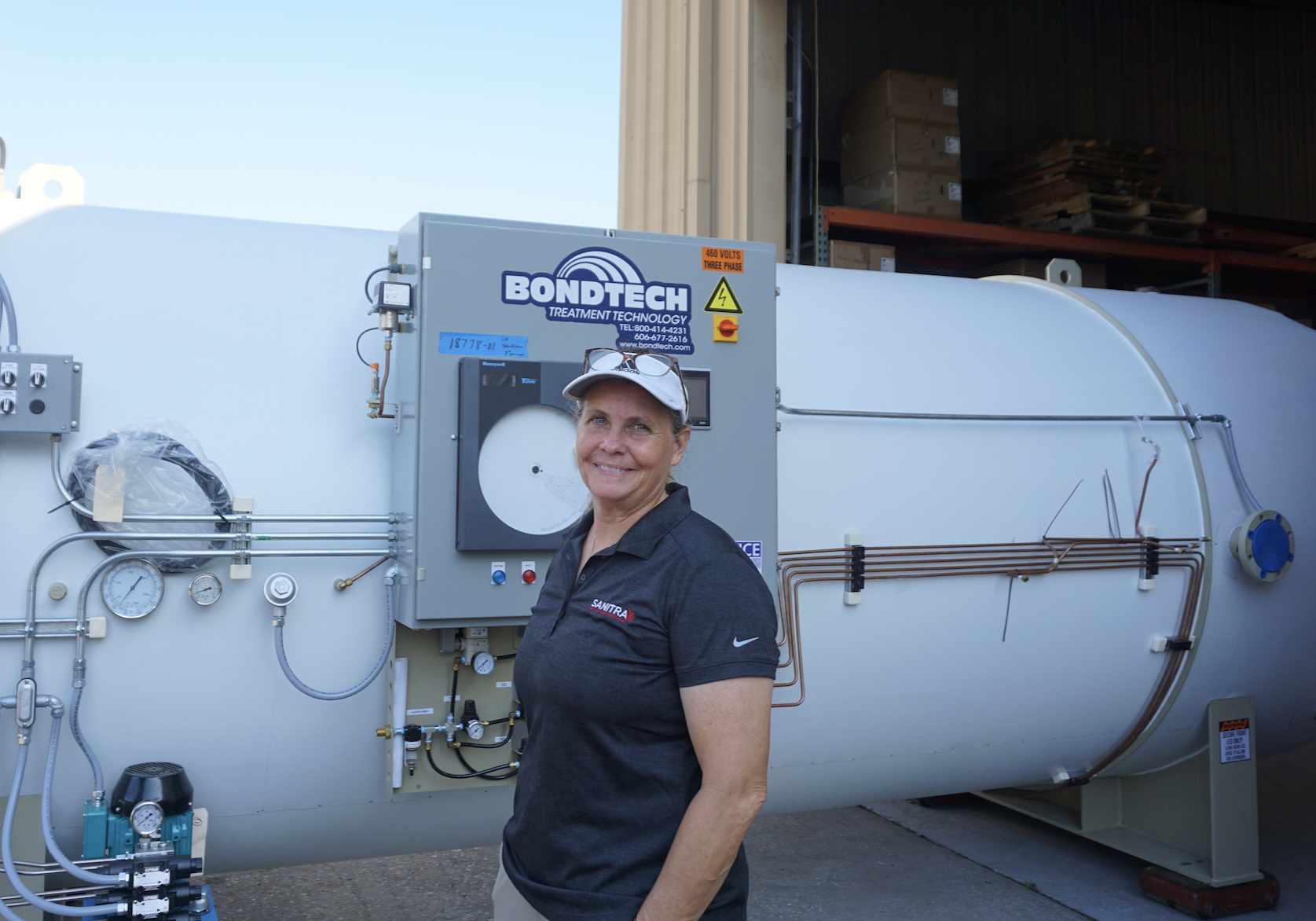Our Treatment Facility
SaniTrax LLC is a local company providing sterilization of biomedical waste through our state of the art autoclave facility right here in Plant City, Florida.
Autoclave
The autoclaving process for sterilizing biomedical waste starts with utilizing our state-of-the-art autoclave which was manufactured by BondTech, a leading manufacturer in the industry.
The first step to processing this waste stream is to ensure you are only processing biomedical waste. There's a screening process in place before autoclaving. This step ensures proper sorting and the exclusion of any prohibited materials. It's vital to prevent hazardous or non-compliant waste from entering the autoclave.
Once the waste is sorted, it is securely placed in designated containers or charging bins. These bins serve as the vessels for loading the waste into the autoclave.
Afterward, the operator skillfully moves the charging bins containing the medical waste into the autoclave chamber. The autoclave chamber is a sealed, high-pressure vessel specifically designed to safely contain and process the waste.
With the charging bins inside, the operator tightly seals the charge door. Ensuring a secure seal is crucial to maintain the integrity of the autoclave chamber throughout the sterilization process.

To initiate the steam decontamination cycle, the autoclave's interior is purged of air. This can be achieved using either a vacuum pump or gravity displacement. We utilize a vacuum pump. The removal of air creates a vacuum condition within the autoclave, which facilitates the thorough penetration of decontaminating steam into the waste. This significantly enhances the treatment's effectiveness.

Sterilizing Biomedical Waste
High-pressure steam is introduced into the autoclave chamber from an external natural gas boiler. The steam is pressurized to raise the temperature of the waste to levels of 285°F, as per the facility's permit and operational protocols. This elevated temperature is sustained for a minimum of 25 minutes to ensure complete sterilization and decontamination of the biomedical waste. Specific time and temperature requirements may vary depending on regulatory standards and facility guidelines.
In addition to the steam injection process, a dry air condenser is employed as an integral part of the autoclave system. This condenser plays a crucial role in efficiently cooling and condensing the steam, converting it back into water. The condensed water can then be safely disposed of, leaving the treated waste dry and free from excess moisture.
During the treatment phase, the high-pressure steam effectively sterilizes and decontaminates the biomedical waste, eradicating pathogens and rendering the waste safe for subsequent disposal. Following the completion of the treatment cycle, the treated medical waste is removed from the autoclave chamber. Non-infectious biomedical waste that has undergone proper sterilization is transported to a designated landfill for final disposal.
The disposal of biomedical waste is subject to rigorous regulation by local, state, and federal authorities to ensure it is handled safely and in compliance with environmental guidelines. It is crucial to emphasize that each facility may have its own set of permits and operational procedures, which can specify variations in temperature, cycle times, and other parameters to meet regulatory requirements and ensure the proper decontamination of medical waste. Strict adherence to safety protocols and regulations is paramount throughout the entire autoclaving process to safeguard both the environment and human health.
Unacceptable Waste
- Radioactive Waste
- Compressed Gas Cylinders
- Trash
- Hazardous Pharmaceutical
- Hazardous Waste
Acceptable Waste
- Sharps Containers
- Biomedical Waste
- Pharmaceutical Waste
- Non-Hazardous Waste
- Trace Chemotherapy
